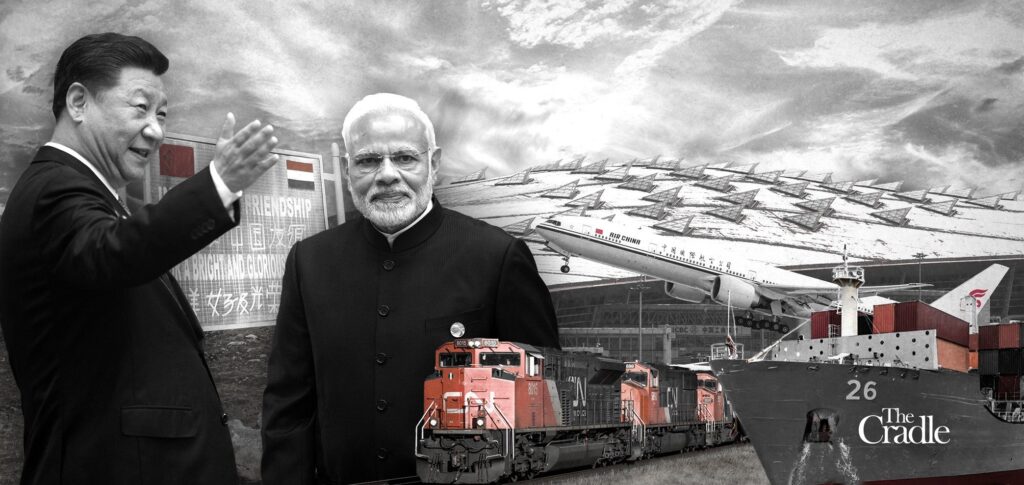The Sino-Indian rapprochement will be a historic event in world politics. It holds the potential to be a key template in the emerging world order in the 21st Century. From the Indian perspective, what is unfolding promises to be the finest legacy of Modi in a tumultuous political career as his 75th birthday approaches next month.
Wang Yi’s Landmark Visit to New Delhi
No doubt, the two-day visit to New Delhi this week by Chinese Foreign Minister Wang Yi, who is also a member of the Political Bureau of the Communist Party of China (CPC) Central Committee and director of the Office of the Central Commission for Foreign Affairs, will go down as a watershed event. It is a game-changer because Wang, arguably one of the world’s most seasoned diplomats, has turned boundary talks into a mission to harness recent positive momentum and inject a new dynamic into the normalization process.
Wang forcefully argued that China and India are obligated “to demonstrate a sense of global responsibility, act as major powers, set an example for developing countries in pursuit of strength through unity, and contribute to promoting world multi-polarization and democratization of international relations.” Xinhua news agency characterised Wang’s remarks as the “consensus” opinion between him and India’s External Affairs Minister S. Jaishankar.
Wang and Jaishankar noted that a critical mass is accruing in the relationship. The Chinese foreign minister said Beijing–New Delhi relations are “showing a positive trend toward returning to cooperation.” Jaishankar concurred that bilateral relations “are continuously improving and developing” and “exchanges and cooperation between the two sides in all fields are moving toward normalization.”
Interestingly, Jaishankar called for India and China to “jointly maintain the stability of the world economy” and stressed that “stable, cooperative, and forward-looking bilateral ties serve the interests of both countries.” The Indian external affairs minister proposed that New Delhi is willing “to deepen political mutual trust with China, strengthen mutually beneficial cooperation in economic and trade fields, enhance people-to-people exchanges, and jointly maintain peace and tranquility in border areas.” He later said in a social media post, “Confident that our discussions today [18 August] would contribute to building a stable, cooperative and forward-looking relationship between India and China.”
Wang’s visit yielded some breakthroughs, too. Principally, the two countries agreed to resume direct flights; facilitate trade and investment flow; cooperate on trans-border rivers; reopen border trade via the Himalayan passes; facilitate visas to tourists, businesses, media, and other visitors in both directions; and expand the visits of Indian pilgrims to the holy places of Kailash-Manasarovar. China is reportedly lifting the ban on rare earth and fertilizer exports to India, as well as heavy equipment for making tunnels in mountainous areas.
Border settlement: Modi’s defining challenge
The most sensational development is that the two countries are exploring an “early harvest” in delimitation of boundaries and have agreed on new mechanisms on border management, which will also work towards de-escalation. This is a highly sensitive issue, as Indian public opinion is shaped by self-serving narratives that emerged after the 1962 war and by the idea of establishing a border that never historically existed.
This is where Modi’s leadership becomes crucial. Modi is probably one of the only leaders today who has the credibility, decisiveness, and vision to navigate a border settlement with China. He has prioritized the normalization of relations with China and is conscious that a truly stable relationship is critically dependent on predictability and stability, which makes it imperative that a border settlement is reached. Modi, during a meeting with Wang on 19 August, emphasized the importance of maintaining peace and tranquility on the border, and also reiterated India’s commitment to a “fair, reasonable, and mutually acceptable” resolution of the boundary issue.
Traditionally, India attributed primacy to its post-Cold War relationship with the US as a hedge against China, which, unsurprisingly, spawned absurd notions that Washington regarded New Delhi as a “counterweight” to Beijing. Suffice to say, the administration of US President Donald Trump’s erratic foreign policies and, specifically, its unfriendly moves recently to curb India’s strategic autonomy came as a wake-up call.
On the other hand, India’s actions have also been partly driven by domestic economic pressures. The point is, India seeks to lift some restrictions imposed on China in recent years, welcome Chinese investment, and increase people-to-people exchanges to boost its economic confidence. Equally, facing US pressure such as high tariffs, India aims to diversify economic and trade ties with countries, including China, which may help to reduce some of the external pressure from the US.
Shared interests in a multipolar world
Wang has signaled that Beijing is as eager as New Delhi to improve the relationship against the backdrop of an increasingly reckless and belligerent Trump administration. Both sides sense that they have common interests. Inevitably, a China–India working relationship anchored on a strategic understanding will do wonders for BRICS. This prospect is already worrying Trump, who has threatened BRICS more than once for allegedly working to dethrone the dollar as the world’s currency.
It is still early to tell, but if the positive trends in Sino-Indian relations gain traction and become a driving force in international politics, it can galvanise the dormant Russia–India–China [RIC] process, which Moscow has been promoting since the idea was first mooted in the late 1990s by the great Russian visionary-statesman late Yevgeny Primakov. Indeed, the correlation of forces internationally has shifted over the past three decades more or less in the directions that Primakov had envisioned with great foresight.
The roadblocks ahead
On the flip side, though, there is a strong pro-American lobby in India with influence over the media, think tanks, academia, and even the Indian establishment and elite community that root for the ties with the US as a defining partnership of the 21st century. All sorts of vested interests are in play. Besides, there are phobias regarding China’s intentions, which will take time to wither away. Commensurate with its rise as a global power, China has a growing presence in the regions surrounding India, which is understandable; however, India tends to view it through the security prism – which only adds to threat perceptions. Then there is the complicated Dalai Lama succession issue, where the signs are that New Delhi treads softly to avoid offending Chinese sensitivities.
Typically, an ex-foreign secretary regretted just this week, amidst all the humiliations heaped on India by Trump, that the US has “lost” India. For a country with a century and more of humiliation in its history as a colony, a slavish mentality may seem strange, but the comprador class is a veritable Indian reality. Make no mistake, the Trump administration’s frustration with India is geopolitical. None other than the famous White House counsellor for trade and manufacturing and Trump’s close aide, Peter Navarro, blurted out in a Financial Times (FT) op-ed this week that the US should not transfer “cutting-edge” military technology to an India which is “cozying up to both Russia and China.”
However, a paradigm shift may ensue if Trump indeed proceeds to sanction India, which cannot be ruled out, forcing a profound Indian rethink on its doctrine of strategic autonomy, which had been predicated on the notion that all countries were equal but America was more equal than others.
_____________________________________________
 Ambassador MK Bhadrakumar was a career diplomat for three decades in the Indian Foreign Service with multi-year assignments in the former Soviet Union, Pakistan, Iran, Afghanistan and Turkey. MK writes extensively on the geopolitics of Eurasia, China, West Asia and US strategies. He is a columnist at The Cradle, writes a popular blog called Indian Punchline, and is a syndicated columnist worldwide.
Ambassador MK Bhadrakumar was a career diplomat for three decades in the Indian Foreign Service with multi-year assignments in the former Soviet Union, Pakistan, Iran, Afghanistan and Turkey. MK writes extensively on the geopolitics of Eurasia, China, West Asia and US strategies. He is a columnist at The Cradle, writes a popular blog called Indian Punchline, and is a syndicated columnist worldwide.

Thank you for a clear and positive article.